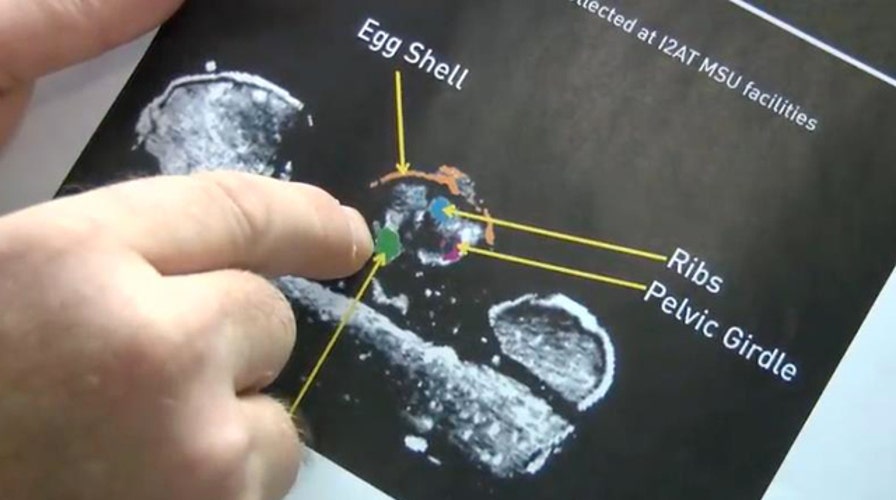Technology could reveal 70 million year old dino egg secrets
Kyle Rothenberg reports on a 70 million year old dinosaur egg about to be scanned by the synchrotron particle collider in the United Kingdom
Inside the geology department at Mississippi State University, one man is on a mission to see exactly what's inside a rock -- but this is no ordinary rock.
It's a 70 million year old fossilized dinosaur egg with a fully intact embryo inside.
Paleontologist John Paul Jones found the egg in Montana back in 2002. Jones says he plans to do something never done before. He's going to create a three-dimensional scan of the fossilized embryo using a synchrotron particle collider in the United Kingdom.
"A synchrotron is essentially like a really powerful oversized x-ray machine," said Christian Baars, Senior Preventive Conservator at the National Museum of Wales.
UK's national synchrotron facility is called Diamond Light Source. According to their website, Diamond "generates brilliant beams of light from infra-red to X-rays which are used for academic and industrial research. This allows scientists to study samples in incredible detail, to a level that is only possible at a synchrotron. It works like a giant microscope, harnessing the power of electrons to produce bright light that scientists can use to study anything from fossils to jet engines to viruses and vaccines."
Jones has taken many traditional two-dimensional CT scans of the egg before, but using a synchrotron can take things to the next level.
A high energy synchrotron, Jones says, will enable him to look at the skull of the embryo to define the genus and species of the dinosaur.
When asked about why this information is important, Jones says nests are extremely important to find out more information about these prehistoric creatures.
"It will give us an insight on how fast they grew. Just from this egg, you get an animal that's probably 25 tons as an adult. That's big, that's twelve-and-a-half elephants," said Jones.
Jones plans to scan the dinosaur egg in Great Britain in March 2015.

